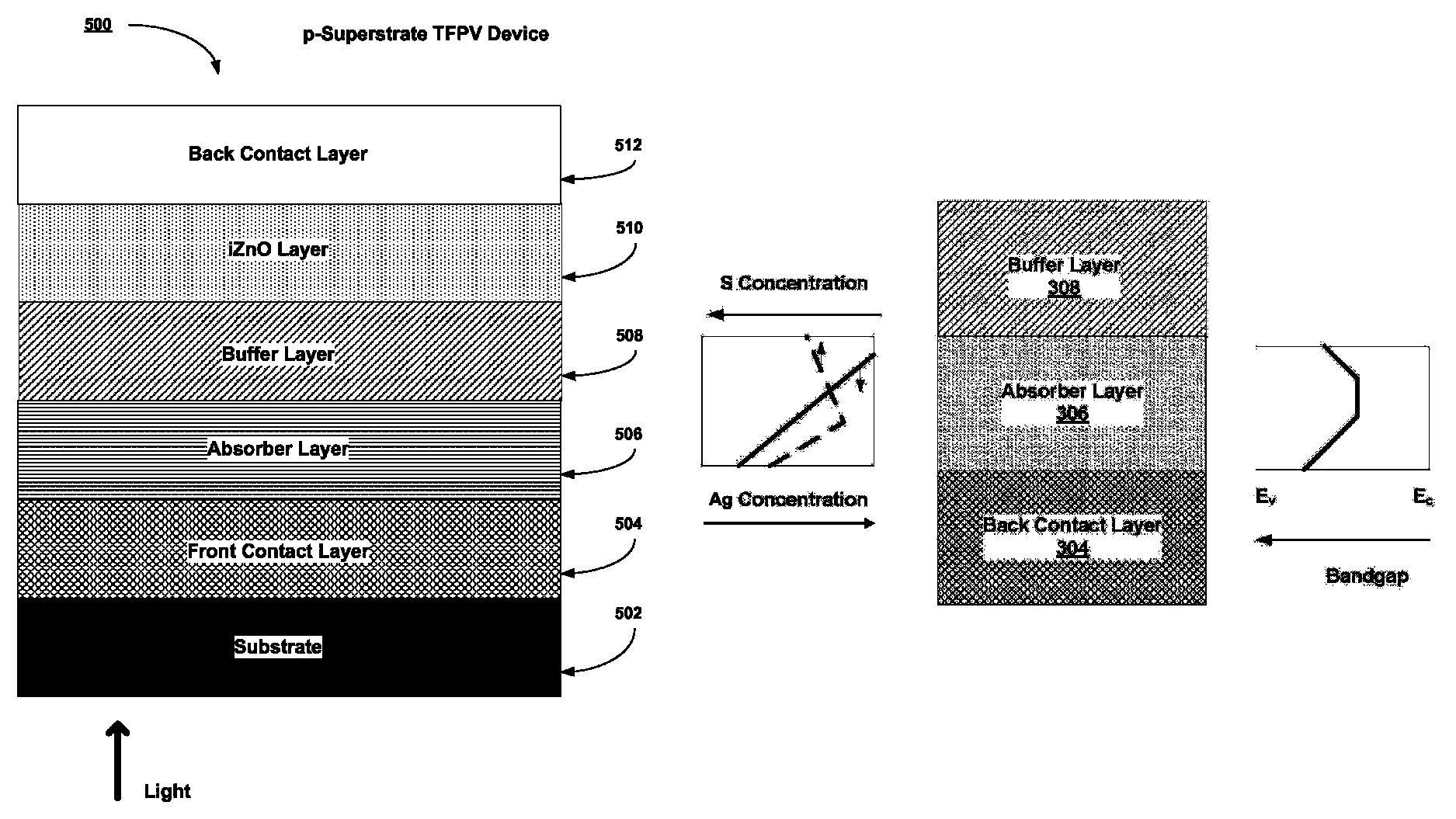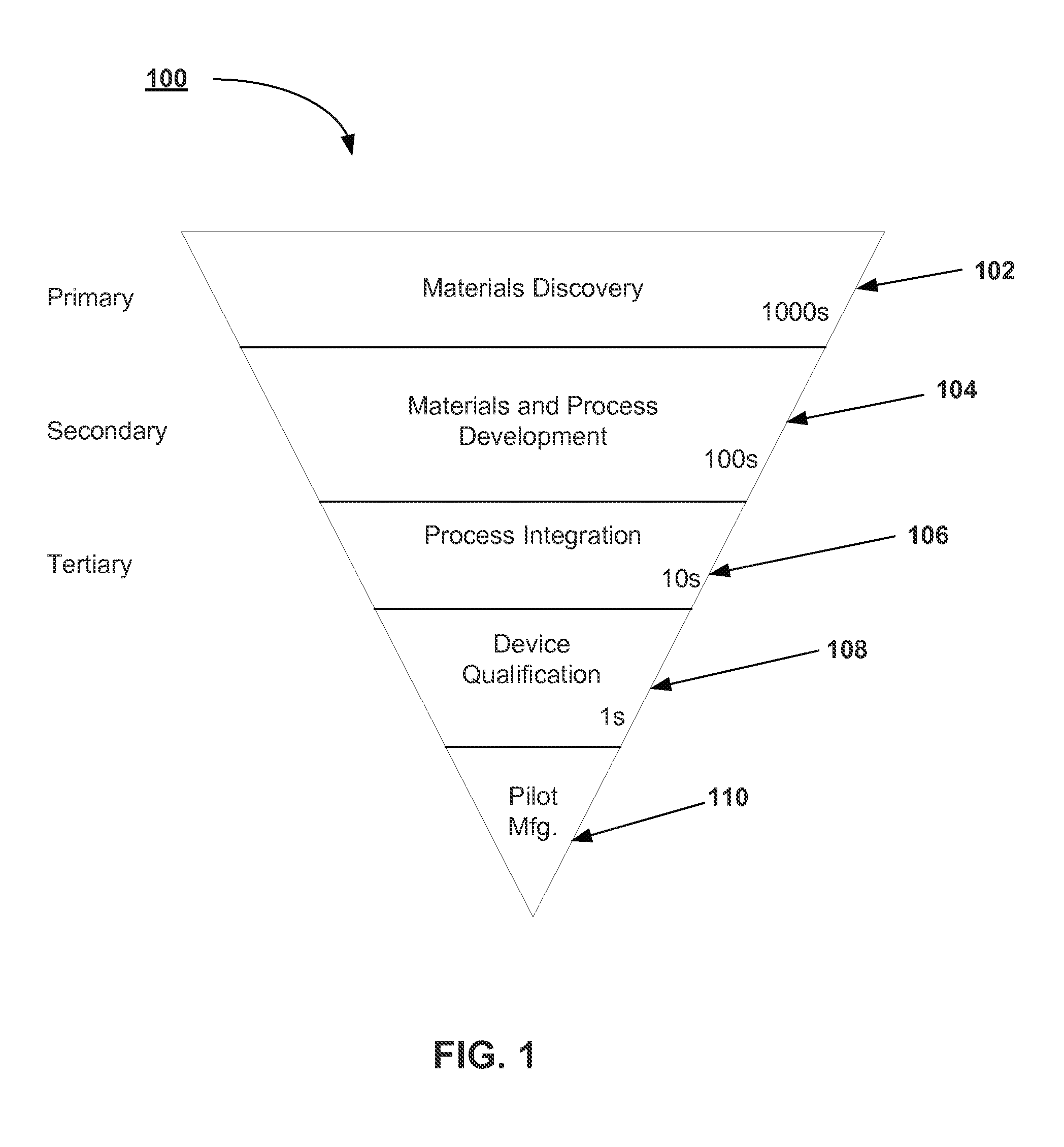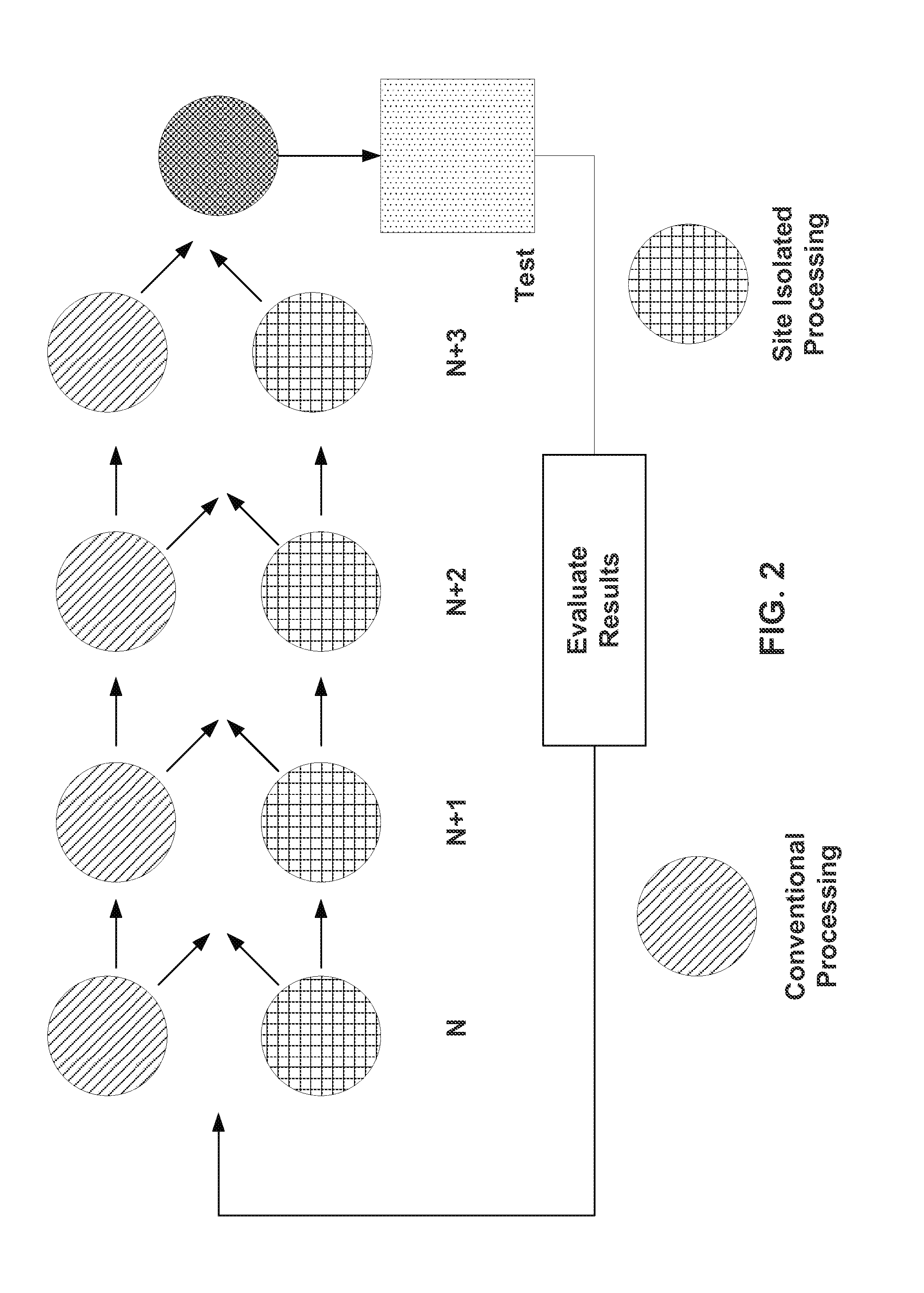Optical absorbers
a technology of optical absorbers and absorbers, which is applied in the field of optical absorbers manufacturing methods, can solve the problems of affecting the annual production of cigs and cdte solar panels, the difficulty of their development and characterization, and the increase of pri
- Summary
- Abstract
- Description
- Claims
- Application Information
AI Technical Summary
Benefits of technology
Problems solved by technology
Method used
Image
Examples
Embodiment Construction
[0032]Before the present invention is described in detail, it is to be understood that unless otherwise indicated this invention is not limited to specific semiconductor devices or to specific semiconductor materials. Exemplary embodiments will be described for solar cells, but other devices can also be fabricated using the methods disclosed. It is also to be understood that the terminology used herein is for the purpose of describing particular embodiments only and is not intended to limit the scope of the present invention.
[0033]It must be noted that as used herein and in the claims, the singular forms “a,”“and” and “the” include plural referents unless the context clearly dictates otherwise. Thus, for example, reference to “a layer” includes two or more layers, and so forth.
[0034]Where a range of values is provided, it is understood that each intervening value, to the tenth of the unit of the lower limit unless the context clearly dictates otherwise, between the upper and lower l...
PUM
 Login to View More
Login to View More Abstract
Description
Claims
Application Information
 Login to View More
Login to View More - R&D
- Intellectual Property
- Life Sciences
- Materials
- Tech Scout
- Unparalleled Data Quality
- Higher Quality Content
- 60% Fewer Hallucinations
Browse by: Latest US Patents, China's latest patents, Technical Efficacy Thesaurus, Application Domain, Technology Topic, Popular Technical Reports.
© 2025 PatSnap. All rights reserved.Legal|Privacy policy|Modern Slavery Act Transparency Statement|Sitemap|About US| Contact US: help@patsnap.com



